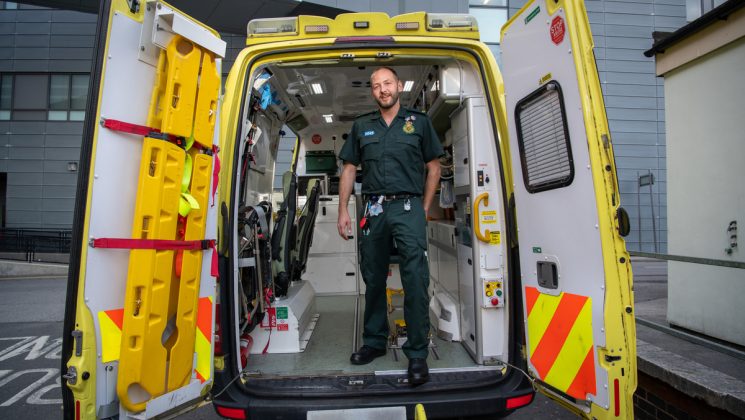Working in the ambulance service is a rewarding career. The feeling of helping people when they need it most is unbeatable and a source of pride for staff.
However, the reality can be very different from the altruistic dream.
Not because we’re no longer helping people and saving lives – of course, that still happens day in day out. But the way staff are treated and how their work is organised has led many in the service to question their perception of how things are run. They’re stressed, exhausted and overwhelmed.
Looking at the big picture, demand on ambulance services has been growing year-on-year, way outstripping government funding.
Recent figures show that in just two years, the number of ‘category one’ (life threatening) incidents rose by more than a quarter (27.2%), and overall activity was up by a tenth. Nationally, there’s an annual funding gap of more than £200m.
Problems have been building, ignored by government, and largely hidden until the pandemic tested ambulance services to the limit with huge surges in demand.
That’s because many people with chronic health conditions haven’t been accessing NHS support during the COVID crisis. Not until it gets to the stage where they need urgent help and they then ring 999 or 111. And that’s putting a strain on the system.
Last month was the busiest ever for ambulance services, with more than a million 999 calls.
Forgive me for sharing a bit of technical stuff, but ambulance services have made it this far through the pandemic by using resource escalation action plans (REAP). These focus all the service’s resources on getting ambulances to patients.
Hitting the highest REAP (think the US military’s DEFCON 1) used to be an exception. But it’s now the norm. We’ve seen many ambulance services raising their REAP levels to the max far too often – and keeping them there for extended periods. The consequences are disastrous.
Staff already work standard 12-hour shifts, either responding to patients or in control centres, taking calls and dispatching ambulances. Many have no break to stop and eat. They frequently get calls near the end of a shift that then overruns, sometimes by hours. It’s not a job where you check your watch and say ‘right, I’m done’.
A&E departments are under pressure so there’s reduced capacity to take in patients who’re left waiting on stretchers in hospital corridors or in ambulances queuing in the car park. Overtime is high, with staff feeling they must come in to help.
There’s immense pressure on control staff too. With hundreds of calls often stacking up during shifts, anxiety levels can go through the roof, with workers worried they’ll miss real emergencies among the many less-pressing calls.
Worried members of the public awaiting news of an ambulance’s arrival often take out their frustration on those at the end of the line.
The toll on staff is immense, physically and mentally. Sickness rates are up, leaving fewer people to cover this extra demand and exhausting those that are left. These are pressures normally only seen in a deep winter crisis, not July and August when NHS staff should be taking a break and resting.
Last week, the government announced that the army was being brought in to support some ambulance services. This is evidence of a crisis that could have been averted, should have been foreseen and must be a wake-up call to the government.
Replacing specialised ambulance staff with army personnel will be an insult to many who’ve trained for years to respond to the urgent clinical needs of patients.
We’ve come a long way from a ‘load and run’ ambulance service, just ferrying people to hospital. Staff are highly trained, mobile clinical NHS teams.
They have the skills, knowledge and experience to keep people at home rather than hospital when safe to do so.
Services need longer term investment, not just one-off cash sums thrown at them during a crisis. They were already under immense pressure and job vacancy rates were high long before anyone had heard of COVID. The pandemic has made a bad situation significantly worse.
UNISON has written to the Association of Ambulance Chief Executives highlighting unsustainable demand. We’ve called on employers to better support staff welfare (in ambulances and control rooms), minimising missed meal breaks, shift overruns and moving away from excessive overtime. The most vital part of the ambulance service must be protected – the staff.
The only long-term solution is continual investment in the workforce to deal with the demands. It takes at least three to five years to train a fully qualified paramedic.
They need to build back the careers so many wanted when they joined the NHS.
• Alan Lofthouse is a senior UNISON national officer and former paramedic. This blog was first published by The Yorkshire Post.






